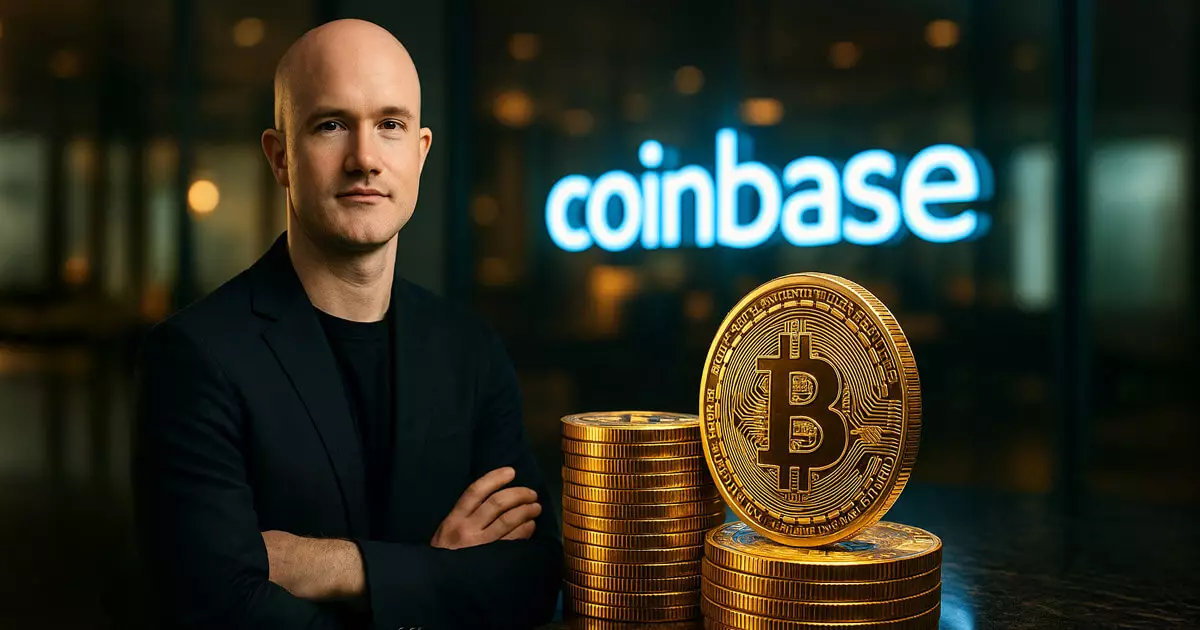Coinbase, a flagship cryptocurrency exchange and a major player in the digital asset ecosystem, appears to be evolving in a strategic direction that merits close scrutiny. Brian Armstrong, the firm’s CEO, has recently disclosed that Coinbase is purchasing Bitcoin on a weekly basis. This revelation hints at a significant pivot towards what Armstrong calls a “Long Bitcoin” approach. While he stopped short of confirming a formal corporate treasury reserve of Bitcoin, the implications are hard to ignore, especially when juxtaposed against Coinbase’s traditionally cautious stance regarding BTC holdings.
The company’s gradual accumulation raises questions about whether Coinbase is inching towards a much bolder treasury strategy—one resembling MicroStrategy’s aggressive conversion of cash reserves into Bitcoin. This is a noteworthy development because historically, Armstrong and his leadership team opposed large-scale Bitcoin balance sheet allocations, citing concerns over financial instability during critical growth phases. The cautious philosophy made sense during Coinbase’s earlier days, but the new weekly purchases suggest that confidence in Bitcoin’s institutional viability is strengthening.
Why This Matters: The Risks Behind Corporate Bitcoin Hoarding
From a center-right liberal viewpoint, the embrace of Bitcoin by prominent companies should be celebrated insofar as it demonstrates free-market innovation and diversification in financial practices. However, it is equally important to voice prudent skepticism about the risks of corporates amassing significant crypto holdings without transparent frameworks. Coinbase’s incremental Bitcoin buying, lacking clarity on scale and purpose, introduces uncertainties not only for investors but for the broader market ecosystem.
David Duong, Coinbase’s Head of Research, raised a critical warning that as more public companies pile into Bitcoin, the resulting concentration may destabilize price dynamics. Market volatility—already a defining characteristic of Bitcoin—could exacerbate, especially if large holders are compelled to liquidate during downturns. This domino effect risks disrupting not only individual firms but also contagiously impacting trading platforms and retail portfolios across the crypto landscape.
Such structural imbalances threaten to undermine the very financial stability that fiduciaries and regulators seek to uphold. It also raises pertinent questions about whether companies are exercising sufficient due diligence or falling prey to herd mentality bolstered by speculative euphoria.
The Broader Corporate Bitcoin Trend: Is It Sustainable or Reckless?
Coinbase’s moves are part of a wider American corporate pattern. Organizations ranging from Trump Media and Technology Group to GameStop have recently embraced Bitcoin as a treasury asset or part of a hedge strategy. While this demonstrates a notable democratization of innovation in corporate finance, it also forces a reckoning with prudential risk management.
By adopting Bitcoin as a treasury asset, these companies embrace a highly volatile, unregulated alternative asset as a material component of their balance sheets. For firms seeking to attract and safeguard shareholder value, this is a gamble with potentially profound repercussions. Consider GameStop’s rollercoaster financial narrative: its Bitcoin acquisitions coincide with its struggle for relevancy and financial health. The danger is that these firms might prioritize short-term signaling or speculative allure over fundamental business resilience.
From a policy and market stability perspective, it is imperative to demand transparency and strengthened governance around such crypto treasury initiatives. Investors and regulators should be wary of imbalanced risk exposures masquerading as innovative financial management.
The Market’s Response and Investor Psychology
The market’s enthusiastic reception to Coinbase’s activities is evident in its stock price reaching heights unseen since late 2021. This surge illustrates growing investor appetite for crypto-equity exposure amid wider geopolitical and economic uncertainties. For many, investing in Coinbase stock offers a supposedly safer conduit into the crypto space than direct Bitcoin ownership, sidestepping some volatility and custodial risks.
Yet, while bullish sentiment is understandable, it risks overlooking the underlying fragility stemming from Coinbase’s evolving strategy. Public enthusiasm can prematurely inflate valuations and foster speculative bubbles disconnected from fundamental business metrics. Investors drawn by the allure of crypto’s upside might underestimate market risks amplified by institutional Bitcoin accumulation.
Reconsidering Coinbase’s Corporate Identity
Ultimately, Coinbase’s quietly accelerating Bitcoin buy-ins reflect a deeper identity question: is it merely an exchange built on transaction volume, or is it transforming into a hybrid institution embracing Bitcoin as a core corporate asset? If the latter, this redefinition bears immense consequences for its operational and regulatory profile.
For Coinbase to navigate this transformation responsibly, it must embrace transparency and articulate a clear strategy to shareholders and regulators alike. Ambiguity invites anxiety and fuels volatility, both of which are antithetical to Coinbase’s goal of institutional legitimacy.
Navigating the thin line between innovation and recklessness, Coinbase and its peers must prioritize governance, risk mitigation, and long-term stability. Investors rooted in center-right liberal values should champion responsible corporate stewardship that aligns innovation with prudent financial management, insisting on accountability even amid enthusiasm for crypto’s disruptive potential.

